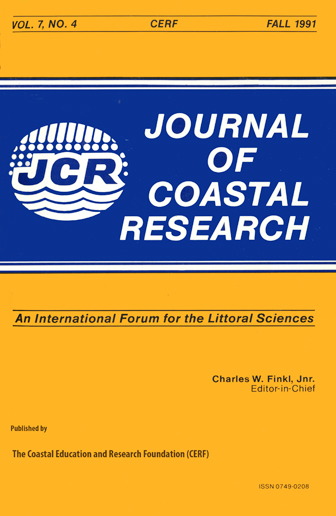Empirical Stability Relationships for Estuarine Waterways and Equations for Stable Channel Design
Keywords:
Tidal inlet stability, tidal hydraulics, inlet morphology, estuary, Auckland, New Zealand, causeways, empirical modelAbstract
Empirical relationships between channel morphology and hydraulic parameters, similar to those for open coast tidal inlets, are derived for eleven estuarine waterways in the Auckland region, New Zealand. The waterways are tidal channels and creeks located in harbors where there is low littoral drift and stream inflow. They are mesotidal (tidal prism ranges from about 1.3 x 106 to 29 X 106 m3) and the sediments are muddy fine sands. Causeway- modified waterways have generally smaller throat areas compared to natural waterways of similar tidal prism because the causeway constriction increases current velocity and therefore flow through the channel and bed scour results in a relatively deep channel (i.e. a lower width/depth ratio and more efficient channel). At one waterway adjustment in channel geometry after causeway construction resulted in considerable bed scour and it took some 15 to 20 years for the channel to develop a new equilibrium profile. The empirical relationships can be used to calculate the design cross-section of estuary channels prior to modification by engineering works such as causeways, or where new canal waterways are to be dredged. The Auckland waterways data were used to test some common stable channel design formulae. The Lacey (1958) and the Simons and Albertson (1960) formulae underestimate throat area, whereas the Maza and Echavarria (1973) and Bruun (1978) formulae can be successfully used to predict waterway scour depth and throat area.


